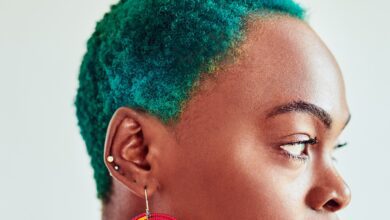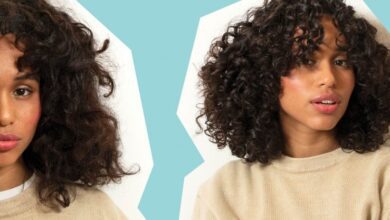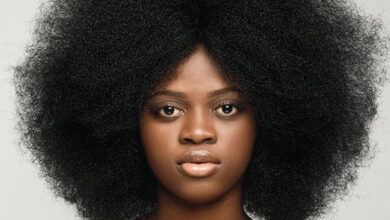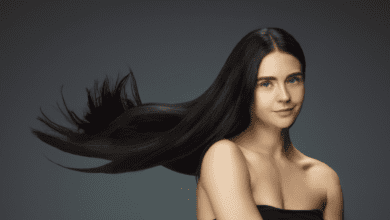
Are you tired of spending hours straightening, curling, or chemically treating your hair? It’s time to embrace your natural beauty and transition to your authentic hair texture! Discover the tips and tricks that will help you make the switch effortlessly. From understanding your hair type to finding the right products, this article will guide you on your journey towards loving and embracing your natural hair. Say goodbye to damaging heat tools and hello to the beautiful, healthy hair you were born with!

Understanding Your Hair Texture
When it comes to embracing your natural hair texture, the first step is to understand it. Determining your hair type is crucial as it helps you choose the right products and develop a suitable hair care routine. There are several common hair texture categories that can guide you in understanding your hair better.
Determining Your Hair Type
Before you embark on your hair transition journey, it’s important to determine your hair type. Hair types are generally classified into four categories: straight, wavy, curly, and kinky. Within each category, there are subcategories that further define the unique characteristics of your hair. Understanding your hair type can help you make informed decisions about which products and hairstyles will work best for you.
Common Hair Texture Categories
Straight Hair
Straight hair is characterized by its smooth and sleek texture. It typically lacks natural volume and can easily become oily. Straight hair tends to be resistant to curls, making it challenging to achieve and maintain any kind of curl pattern.
Wavy Hair
Wavy hair falls somewhere between straight and curly. It has a natural wave pattern that can range from loose waves to more defined S-shaped waves. Wavy hair is prone to frizz and may require extra care to maintain its shape and definition.

Curly Hair
Curly hair has a distinct curl pattern, ranging from loose curls to tight coils. It can be prone to dryness and frizz, requiring extra moisture and care to maintain its shape and definition. Curly hair often benefits from styling techniques that enhance and define the natural curl pattern.
Kinky Hair
Kinky hair has a tight coil pattern and is often referred to as afro-textured or 4C hair. It is the most fragile hair type and requires gentle handling and extra moisture to prevent breakage and maintain its health. Kinky hair is incredibly versatile and can be styled in various ways, including twist-outs, braid-outs, and protective hairstyles.
Prepare Your Hair for Transition
Once you have a better understanding of your hair texture, it’s time to prepare your hair for the transition to its natural state. This involves trimming off any damaged hair, deep conditioning treatments, and minimizing heat styling.
Trimming Off the Damaged Hair
Before embracing your natural hair texture, it’s essential to get rid of any damaged or split ends. Trimming off the damaged hair will promote healthier hair growth and prevent further breakage. Regular trims every few months are recommended to maintain the health of your hair as you transition.
Deep Conditioning Treatments
Deep conditioning treatments are a crucial step in preparing your hair for the transition process. These treatments help replenish moisture, nourish the hair shaft, and improve overall hair health. Look for deep conditioners specifically formulated for your hair type to provide the best results.
Minimizing Heat Styling
Heat styling tools such as flat irons and curling irons can cause damage and weaken your hair. Minimizing heat styling during the transition period is important to prevent breakage and maintain the natural pattern of your hair. Embrace your natural texture and opt for heat-free styling methods instead.
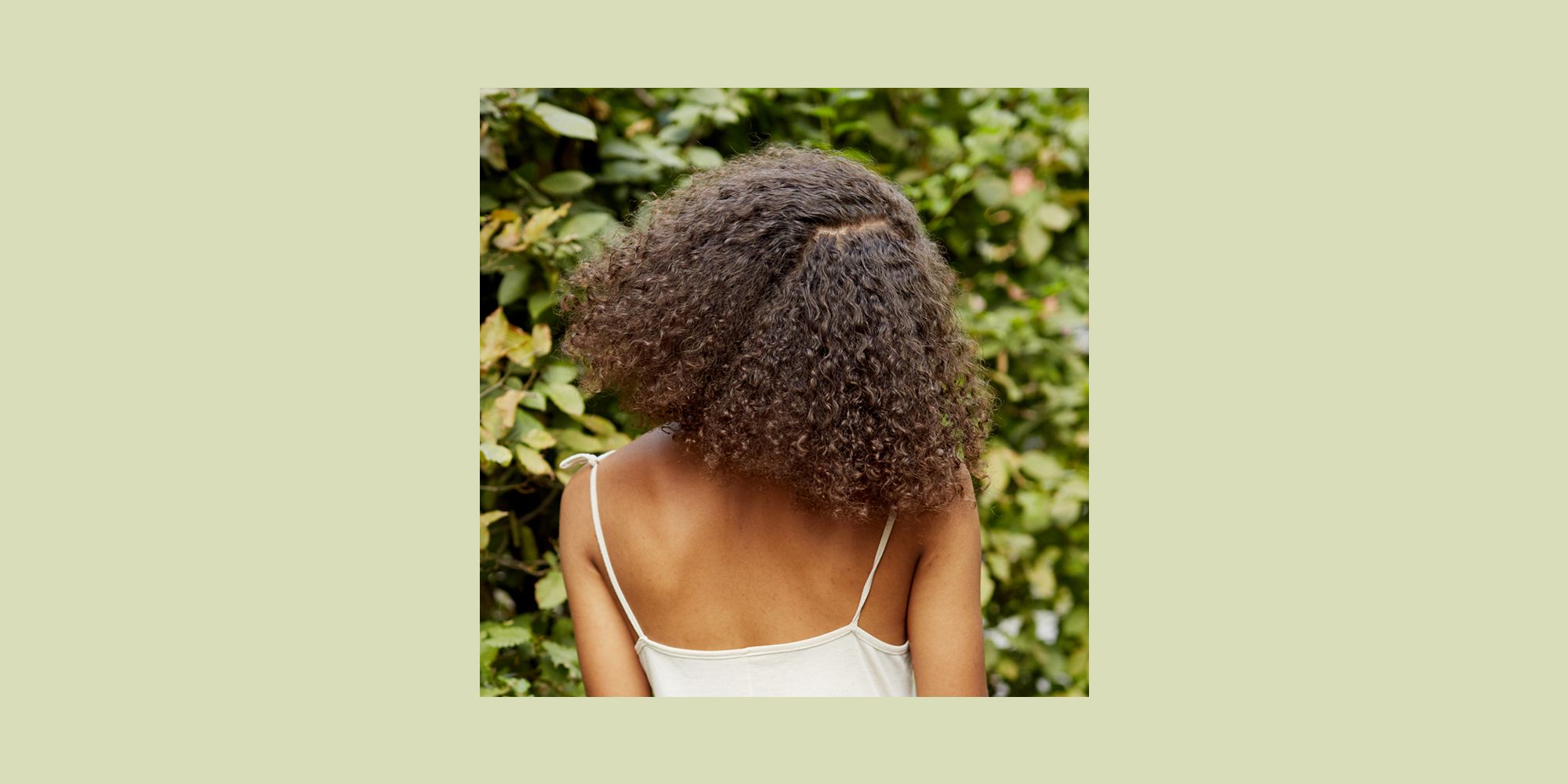
Choosing the Right Hair Care Products
Choosing the right hair care products is essential for maintaining the health and appearance of your natural hair. Here are some key products to consider:
Sulfate-Free Shampoos
Sulfates are harsh detergents commonly found in shampoos that can strip away natural oils from your hair, leaving it dry and brittle. Opt for sulfate-free shampoos that gently cleanse the hair without stripping away its natural moisture.
Moisturizing Conditioners
Moisture is key when it comes to natural hair care. Look for moisturizing conditioners that nourish and hydrate your hair, restoring its moisture balance. These conditioners help make your hair softer, more manageable, and easier to style.
Leave-In Conditioners
Leave-in conditioners are a great addition to your hair care routine, especially if you have dry or curly hair. They provide an extra boost of moisture, help detangle your hair, and provide added protection from environmental factors.
Styling Gels and Creams
Styling gels and creams help define and enhance your natural curl pattern, providing hold and reducing frizz. Look for products that are specifically designed for your hair type to achieve the best results.
Developing a Hair Care Routine
Developing a consistent hair care routine is essential for maintaining the health and appearance of your natural hair. Here are some key aspects to consider:
Cleansing Frequency
The frequency of shampooing your hair will depend on your hair type and personal preference. Some people may prefer to shampoo their hair once or twice a week, while others may choose to co-wash (use conditioner instead of shampoo) more frequently. Experiment to find the right balance for your hair.
Conditioning Methods
Conditioning your hair is crucial for maintaining moisture and manageability. You can choose to condition your hair in the shower, using a rinse-out conditioner, or opt for deep conditioning treatments once or twice a week. Find what works best for your hair type and incorporate it into your routine.
Detangling Techniques
Detangling your hair is an important step in preventing breakage and maintaining its health. Use a wide-tooth comb or your fingers to gently detangle your hair, starting from the ends and working your way up to the roots. Applying a detangling spray or leave-in conditioner can make the process easier.
Protective Hairstyles
Protective hairstyles can help minimize damage and promote hair growth. These styles, such as braids, twists, and updos, protect your ends and reduce manipulation, allowing your hair to thrive. Experiment with different protective styles to find what works best for your hair.
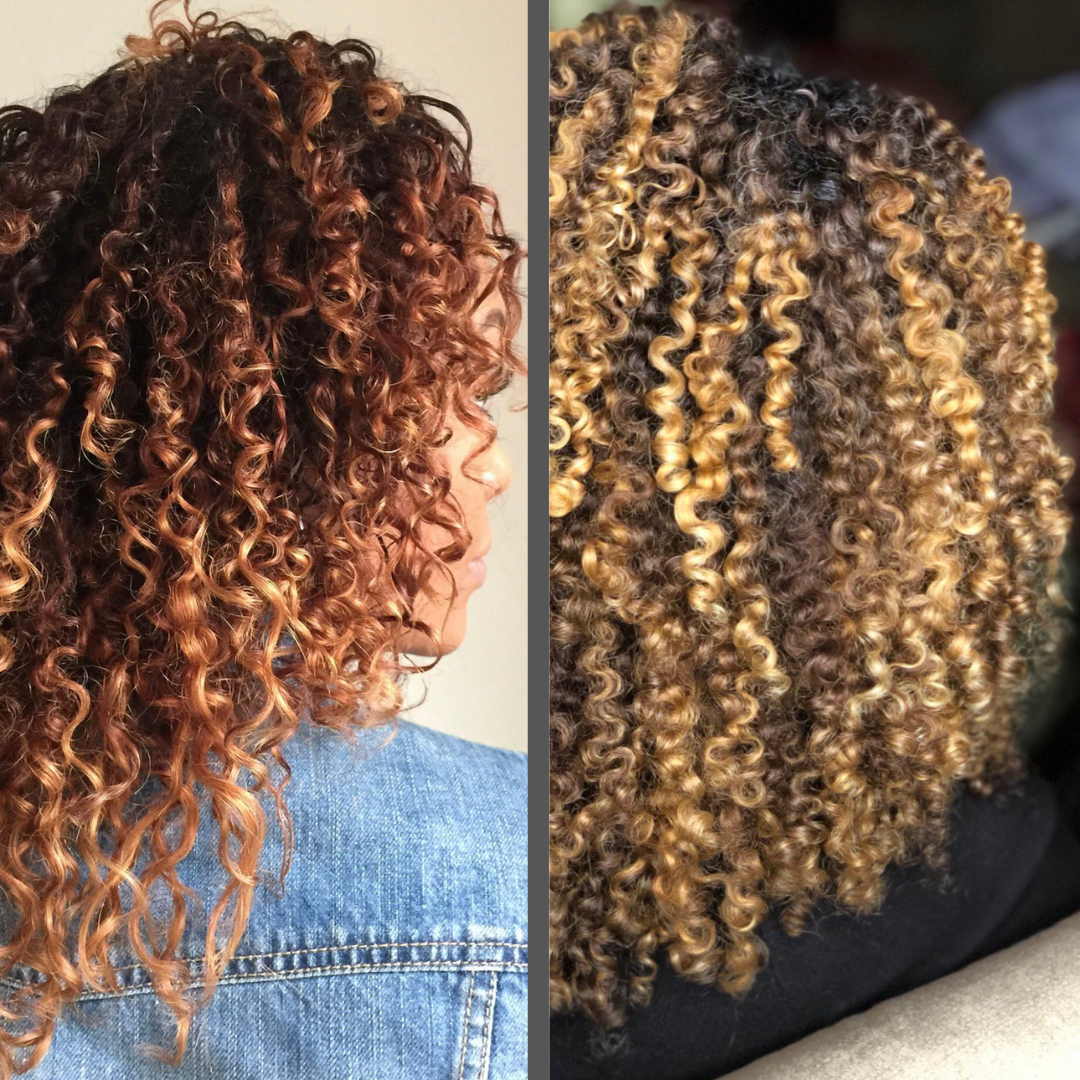
Learning to Embrace Your Natural Texture
Transitioning to your authentic hair texture is a journey that requires patience, exploration, and self-acceptance. Here are some tips to help you embrace your natural texture:
Patience with the Transition Process
Transitioning to your natural hair texture takes time. Be patient with the process and remember that everyone’s hair journey is unique. Embrace the changes your hair goes through and celebrate each milestone along the way.
Exploring Different Styling Techniques
Embrace the versatility of your natural hair by exploring different styling techniques. From wash-and-go styles to twist-outs and braid-outs, there are countless ways to showcase your beautiful, natural texture. Have fun experimenting and finding styles that make you feel confident and happy.
Acceptance and Self-Love
Embracing your natural hair texture is not just about external beauty but also about self-acceptance and self-love. Your hair is a unique expression of who you are, so celebrate and embrace it. Surround yourself with a positive support system that uplifts and encourages you on your natural hair journey.
Dealing with Common Transition Challenges
Transitioning to your natural hair texture may come with some challenges. Here are some common challenges and tips to overcome them:
Frizz and Humidity
Frizz is a common concern for many people with natural hair, especially in humid climates. Embrace moisturizing products, such as leave-in conditioners and styling creams, to combat frizz. Protective hairstyles can also help minimize frizz and keep your hair more manageable.
Hair Breakage
Transitioning hair can be more prone to breakage, especially if it’s damaged or lacks moisture. Regular trims and deep conditioning treatments can help prevent breakage and promote healthy hair growth. Be gentle when handling your hair to minimize the risk of breakage.
Shrinking or Expanding Curls
Shrinking or expanding curls are a natural characteristic of some hair textures. Embrace the versatility of your curls and experiment with different styling techniques to achieve the look you desire. Twist-outs, braid-outs, and stretching methods can help elongate your curls if desired.
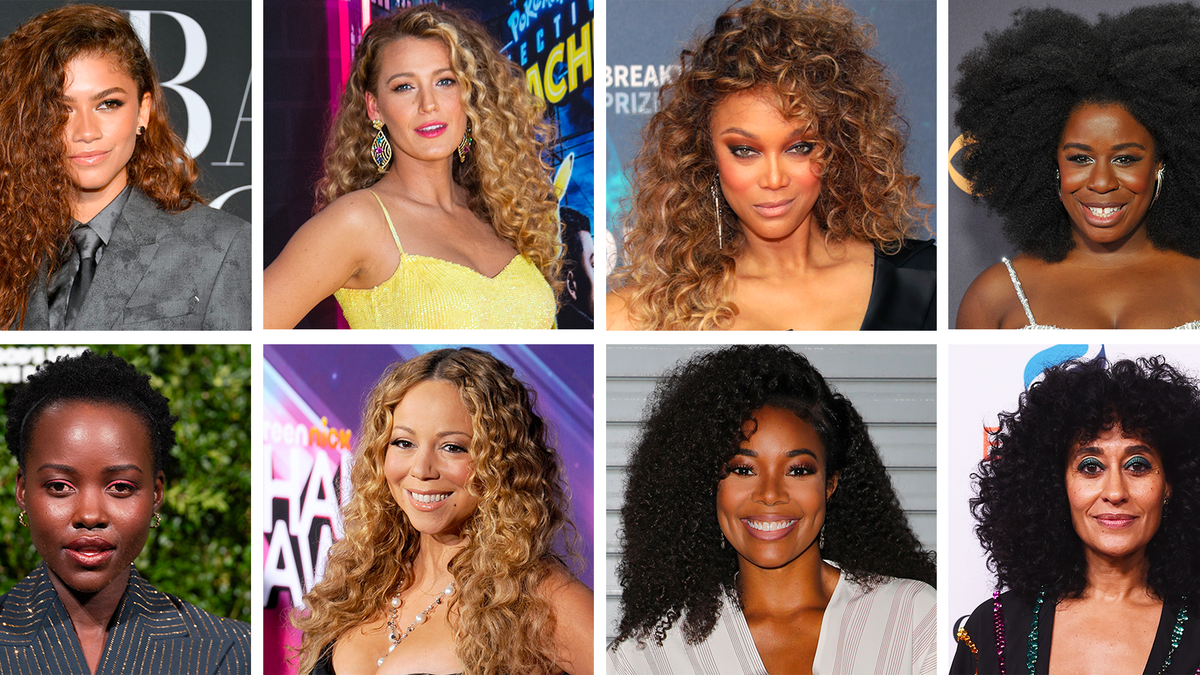
Seeking Professional Guidance
Seeking professional guidance from a natural hair stylist can provide invaluable support and expertise during your hair transition journey. Here are some reasons to consider consulting with a natural hair stylist:
Consulting with a Natural Hair Stylist
A natural hair stylist can assess your hair’s needs, provide guidance on maintaining its health, and recommend products and styles tailored to your hair type. They can also offer tips and techniques to help you navigate the transition process more smoothly.
Getting Regular Trims
Regular trims are essential for maintaining the health of your hair as it transitions to its natural texture. A natural hair stylist can trim off any split ends or damaged hair, ensuring your hair remains healthy and free from breakage.
Hair Maintenance Tips
A natural hair stylist can provide personalized tips and advice on maintaining your hair’s health and appearance. They may recommend specific products, styling techniques, or protective hairstyles that work best for your unique hair type.
Protecting Your Hair at Night
Protecting your hair while you sleep is important to prevent breakage and preserve your natural curl pattern. Here are some tips for protecting your hair at night:
Investing in Silk or Satin Pillowcases
Cotton pillowcases can cause friction and lead to hair breakage. Invest in silk or satin pillowcases, which are smoother and gentler on your hair. These materials reduce friction, helping to minimize tangles and breakage.
Using Protective Styling Techniques
Before going to bed, you can protect your hair by using protective styling techniques such as loose braids, twists, or pineapple styling. These styles help keep your hair contained and minimize friction against your pillow.
Trying Overnight Deep Conditioning
Deep conditioning treatments are not limited to the daytime. Consider trying overnight deep conditioning by applying a deep conditioner or moisturizing hair mask to your hair before bed. Cover your hair with a shower cap or silk scarf to lock in the moisture and wake up to softer, more hydrated hair.
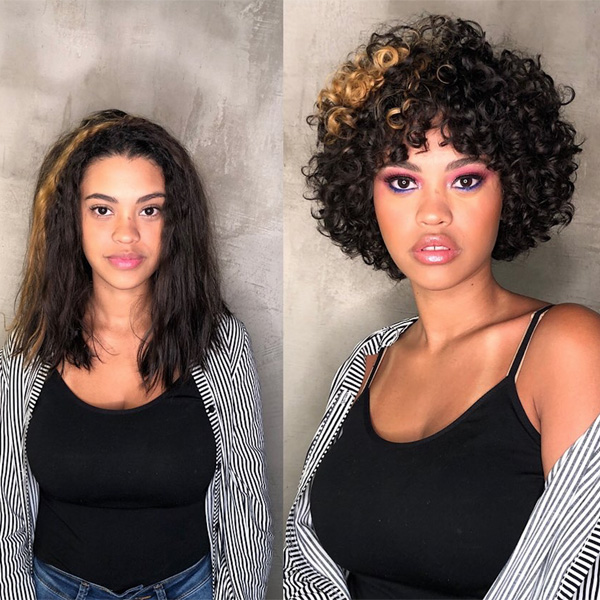
Avoiding Damaging Hairstyling Practices
Certain hairstyling practices can be damaging to your hair, particularly during the transition period. Here are some key practices to avoid:
Avoiding Heat Styling Tools
Heat styling tools can cause damage and weaken your hair. During your transition, it’s best to avoid using flat irons, curling irons, and blow dryers that emit heat. Instead, embrace heat-free styling methods that won’t compromise the health of your hair.
Limiting Chemical Treatments
Chemical treatments, such as relaxers and perms, alter the natural structure of your hair and can cause significant damage. While transitioning, it’s important to avoid chemical treatments and allow your natural hair texture to flourish.
Avoiding Tight Hairstyles
Tight hairstyles, such as ponytails or braids pulled tightly, can put excessive stress on your hair, leading to breakage. Opt for looser hairstyles that don’t pull or tug on your hair, allowing it to breathe and grow freely.
Maintaining Hair Health and Hydration
Maintaining the health and hydration of your natural hair is essential for achieving the best results. Here are some key practices to prioritize:
Drinking Sufficient Water
Hydration starts from within, so be sure to drink enough water daily. Staying hydrated promotes overall hair health and allows your hair to grow strong and vibrant.
Eating a Balanced Diet
A balanced diet rich in vitamins, minerals, and essential fatty acids is crucial for healthy hair growth. Incorporate nutrient-dense foods such as fruits, vegetables, lean proteins, and whole grains into your diet to promote strong, nourished hair.
Regularly Moisturizing Your Hair
Hydration is key for maintaining the health and appearance of your natural hair. Regularly moisturize your hair using water-based products, leave-in conditioners, and oils to keep it hydrated, soft, and manageable.
By taking the time to understand your hair texture, preparing your hair for transition, choosing the right products, and developing a consistent hair care routine, you can successfully embrace your natural hair texture. Remember to be patient with the process, explore different styling techniques, and practice self-acceptance and self-love throughout your hair journey. Seek professional guidance when needed, protect your hair at night, avoid damaging hairstyling practices, and prioritize the health and hydration of your hair for optimal results. Embracing your natural hair is not only about a physical change but also a journey of self-discovery and empowerment.
Maui Moisture Thicken & Restore Shampoo Review(Opens in a new browser tab)
Embrace The Frizz: Tips And Tricks For Every Hair Texture(Opens in a new browser tab)
Shampoo, Condition, Repeat: Best Washing Techniques For Each Hair Type(Opens in a new browser tab)

